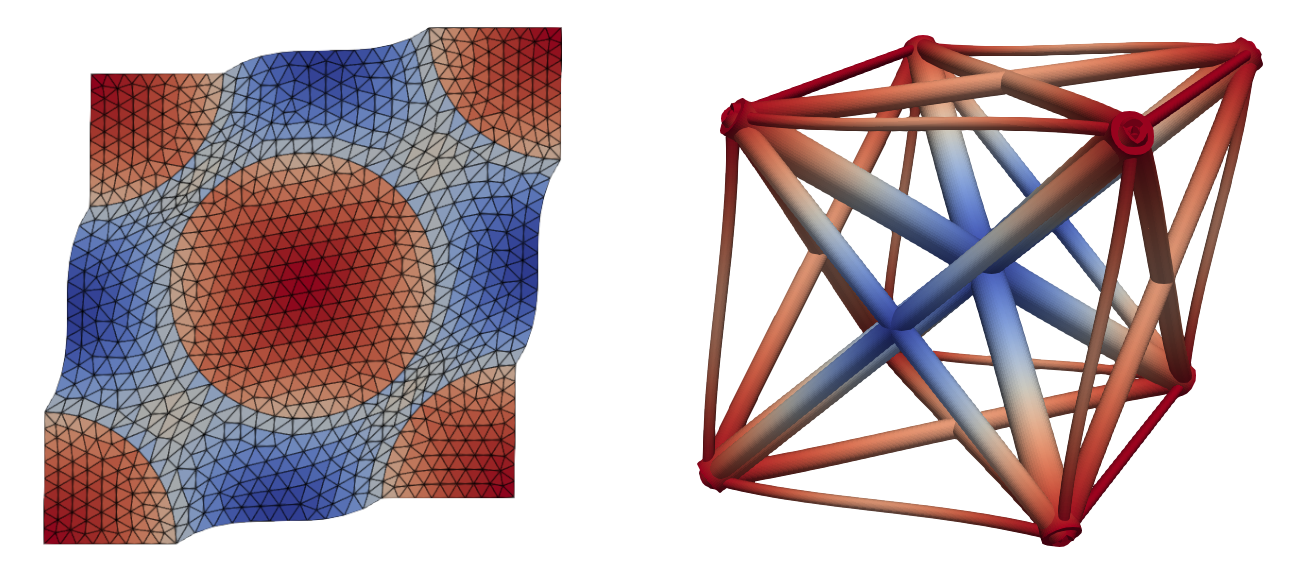Details
| Course name | Model Order Reduction in Computational Solid Mechanics |
| Module number | TBA |
| TUCaN course number | TBA |
| Lecturer | Prof. Dr.-Ing. Dominik Schillinger |
| Language | English |
| Term | Winter |
| Credit points | 6 |
| Examination | Oral exam, homework assignments |
Contents
Fundamentals and mathematical background
- Motivation of reduced order modeling (many-query, real-time, high-dimensional scenarios)
- Traditional engineering approaches: static condensation, modal decomposition
- Foundations of parametrized partial differential equations
- Proper orthogonal decomposition, snapshots, offline/online strategies
- Reduced basis methods, Galerkin projection and orthonormalization, sampling strategies
Model order reduction in computational solid mechanics
- Computational homogenization of heterogeneous materials
- Generalized multiscale finite element methods
Advanced topics
- Stability, system conditioning, empirical interpolation methods
Remarks
Group exercise
The exercise sessions are integrated into the lecture. Each session is scheduled individually to align with the lecture content and will be announced as early as possible.



